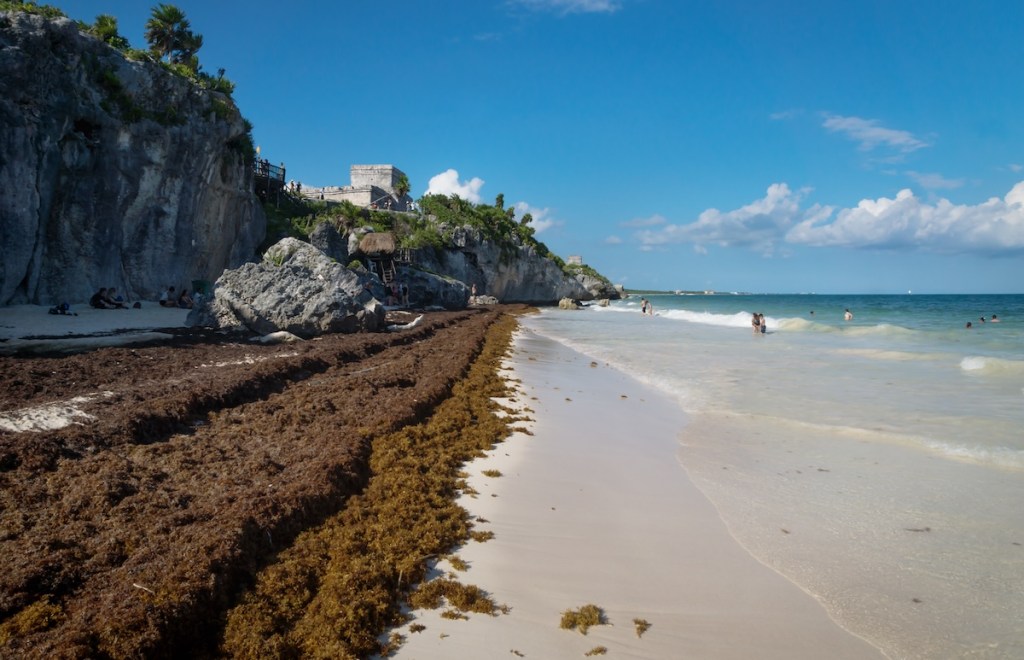The month of May saw an explosion of the nasty-smelling brown seaweed known as sargassum in the Atlantic Ocean, increasing from 31 million metric tons in April to 37.5 million — the largest amount since monitoring began in 2011.
The bloom, which typically runs from April to October, is already blanketing beaches from Puerto Rico to the Yucatan Peninsula, which includes Cancun, Tulum, and Playa del Carmen. These island-like masses are expected to continue their spread in June, invading the western Caribbean, Gulf of Mexico, Florida, and the beaches along the Southern U.S. coastline.
Sargassum is a form of algae that releases hydrogen sulfide and ammonia, which can be dangerous to pregnant women and people with respiratory issues. The tiny sea creatures that bury themselves in the seaweed can cause rashes and blisters if they come in contact with skin.
It’s also a nuisance for resorts, and makes it difficult, if not impossible, for planners to host beach activities and hold waterfront events because of the smell.
Mexico is actively addressing sargassum by focusing on four dozen beaches along the Yucatán Peninsula and Caribbean coast. Punta Cana has invested in barriers to prevent seaweed from reaching the shore. However, smaller Caribbean islands without the budget to address this issue are leaving the cleanup to the individual hotels. Some resorts are even installing their own barriers, such as the new AVA Resort Cancun, which just hosted the annual IRF Invitational this week.
What Can Planners Do?
The first step for planners is to get informed, said Kimberly Ruby, client engagement manager, marketing, at Canada Life Reinsurance, who began researching beach resorts for a vacation and could not find a single property that was addressing the issue.
“Properties need to make guests aware. It’s like ADA concerns. I’d like to know ahead of time that your elevator is down. I can’t make a decision if I don’t know about it.”
There are many ways planners can be affected. “If I select a venue for a site visit and then see the sargassum — and smell it — I’ve wasted time and money visiting,” she said. “Even worse would be having to scramble to create a Plan B for a beach event, then worry about health issues among attendees.”
She suggests speaking with a lawyer about adding a frustration of purpose clause to the contract if the unusable condition of the beach extends beyond a certain date. “It might help you get out of working with that particular hotel, but it still doesn’t solve the issue of finding a last-minute replacement.”
Sargassum Monitoring
There are several online resources online that planners can use to track the sargassum bloom in real time, including:

